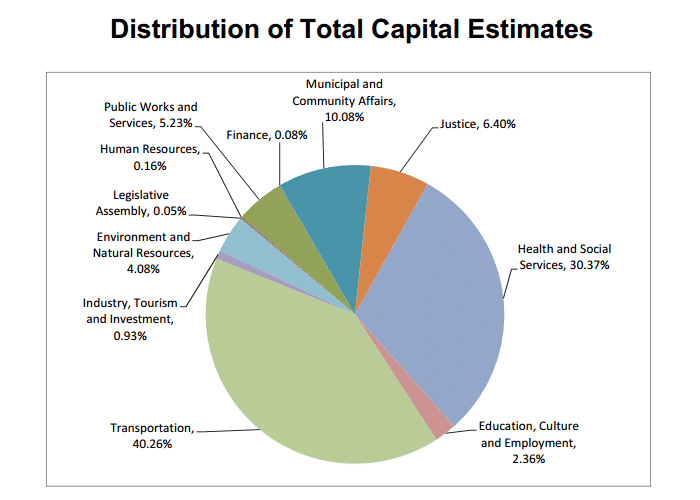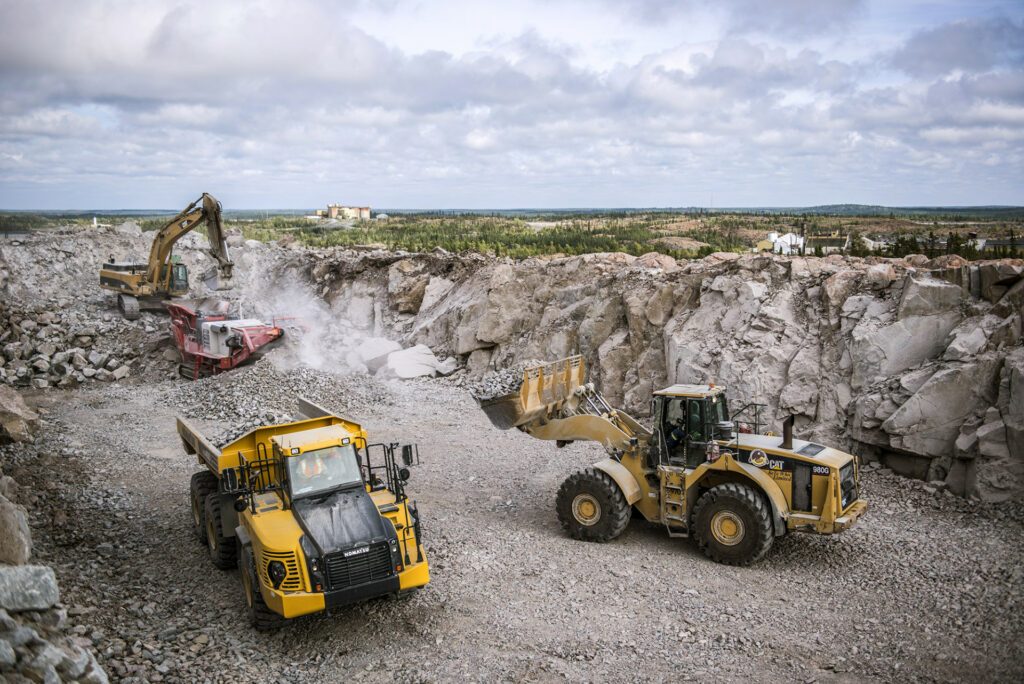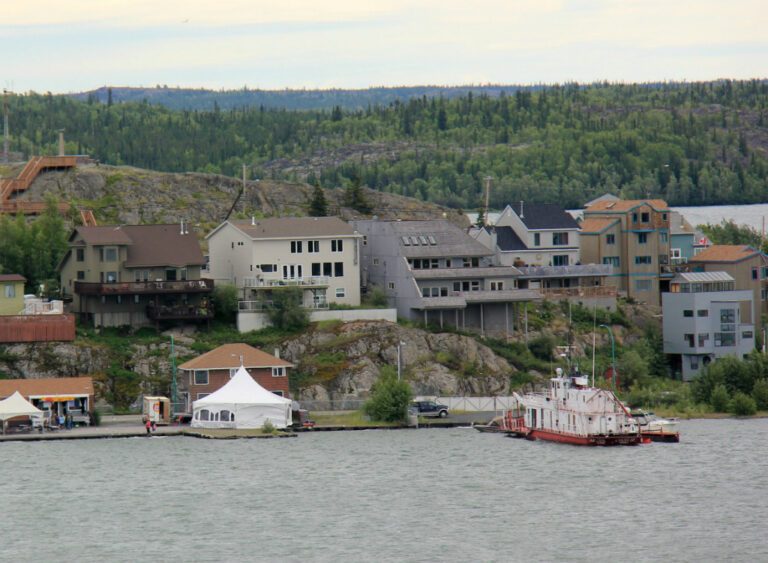Even with a report outlining arsenic hotspots around the route planned for the Giant Mine bypass road, the Department of Transportation didn’t conduct baseline testing before construction began, according to Range Lake MLA Daryl Dolynny.
On Friday, Dolynny discussed two documents tabled the previous day which provide, he claims, “clear evidence that the DOT failed to provide the necessary liability aspects for potential risk to workers and contractors.”
One is a 2008 master’s thesis from Queens University examining arsenic levels in surface soil around Giant Mine. The other is a 2014 meeting summary of the Giant Mine Working Group that notes DOT “had been made aware of the Queens soils results, and their vicinity to the highway realignment activities,” but it “did not do any baseline sampling before the road went in.”
When Dolynny asked Transportation Minister Tom Beaulieu about the issue, Beaulieu said he had no knowledge of the report.
“I can’t speak for whether the senior management at DOT has seen that report or not. I know that it wasn’t directly related to the bypass road, and I have not seen the report,” he said.
“I’m assuming the department, if advised by the Department of Environment and Natural Resources … that it would be dangerous to build a road there, that the road would not have been built there,” he added.
Dolynny said his concern is the future health of the workers who built the bypass.
“Ten years from now, 15, 20 years from now, when we look back and go, were precautions taken, clearly there was a lack of due diligence and accountability,” he said.
“I can assure you the minister was aware of this information, I’ve had dialogues with the minister and the department about these very same documents earlier in the summer,” he said outside the assembly. “So I’m not sure why the minister responded the way he did.”
Low revenue growth, business investment could mean program cuts
The NWT is looking rather frail on the fiscal health front, according to Finance Minister Michael Miltenberger.
“NWT economic activity is only three-quarters of what it was eight years ago because resource production is declining and business capital investment is significantly lower,” said Miltenberger on Friday in a fiscal update to the assembly.
Revenue growth over the next five years is expected to be “significantly lower than historical growth rates,” he said, with gross revenues growing by less than one per cent annually.
The amount expected from post-devolution resource revenue over the next five years dropped by $7 million – from $120 million to $113 million. That number could continue to fall, said Miltenberger, as resources “are extremely volatile in that the expected revenue stream could fluctuate by as much $30 million from the expected annual average.”
Future cash from resources is uncertain enough the GNWT won’t fund programs and services with it, only infrastructure and debt payment.
The key to economic recovery, said Miltenberger, is growing the population and “transformational investments” like the Mackenzie Valley Fibre Optic Link and the Mackenzie Valley Highway. The government is trying to achieve the former with aggressive recruiting down south. The “transformational” projects will have to come at the expense of programs and services, Miltenberger admitted.
“Funding these strategic investments require operating surpluses. Given the medium-term revenue outlook, these operating surpluses will only be achieved through making choices about what programs we fund and how much we fund them,” he said.
He did not indicate what programs would be subject to these “choices.”
The government’s financial straits, he said, might be improved if energy costs can be brought down. A whopping $58 million was spent underwriting energy costs over the past several years – an unsustainable amount, said Miltenberger. The government will be brainstorming energy-cost reduction during a second energy charrette scheduled for November.
Increased GNWT capital spending slated for highway construction, health facilities

Source: GNWT Capital Estimates 2015-2016
The 2015-16 capital budget million was discussed in assembly for the first time on Friday and it’s rising compared to the previous year’s estimates. The $278 million estimate – not including an additional $36 million for the Housing Corp. – represents a nearly 24 per cent increase over the $225 million initially planned for 2014-2015.
The biggest chunk of the 2015-2016 budget is $108 million slated for highway construction and repair. A large portion of that is for the Inuvik-Tuktoyaktuk highway. According to Miltenberger, Tuk highway construction is ahead of schedule, so the GNWT is looking to spend $40 million more this year, “to ensure that the project keeps working and that the work gets done without any break.” The money will be taken from next year’s budget, though Miltenberger says the move won’t reduce funding for other projects.
The other big expenditure is $84 million for health facilities. Part of that is earmarked for Stanton renovations, though the main Stanton upgrade is being managed outside the normal capital budget.
Not all MLAs were pleased with the capital budget.
Frame Lake MLA Wendy Bisaro said too much is being spent on highway infrastructure and not enough on programs and services.
“I believe that we put too much money into projects, which presumably are going to assist us with economic development, and we’ve put not enough money into infrastructure, which is going to assist our people. I’m thinking about schools, I’m thinking about health structure,” she said.
This was echoed by Weledeh MLA Bob Bromley. “This government’s approach is to throw money at infrastructure, particularly to try and attract mega development when we know the global economy is not there,” he said.
He noted education infrastructure made up only two per cent of the capital budget, “despite the legal requirements to provide infrastructure as required by the courts for the Francophone educational system … (and) despite the fact that we have schools like Sissons, 40 years old, needing tens of millions of dollars in renos.”








